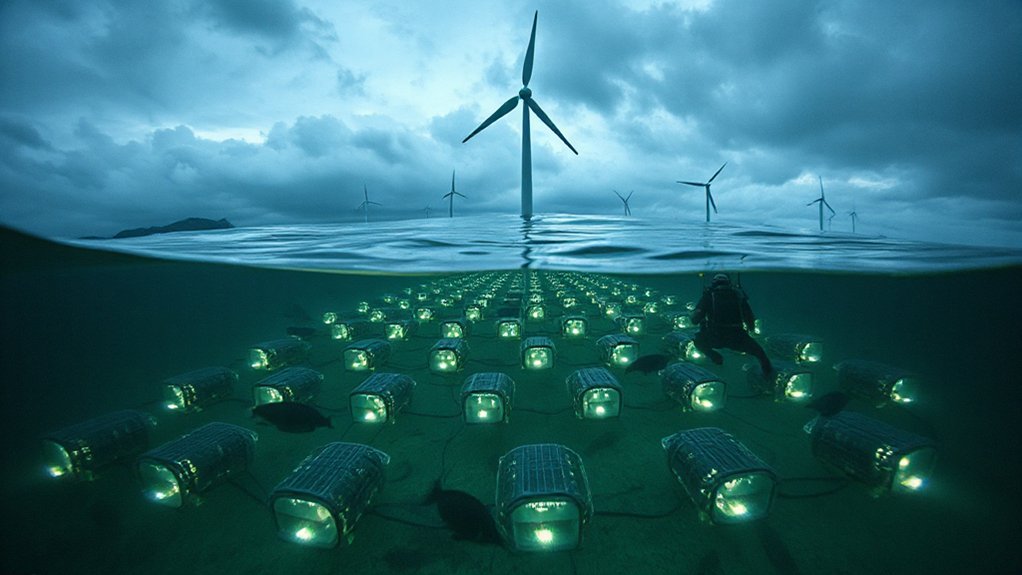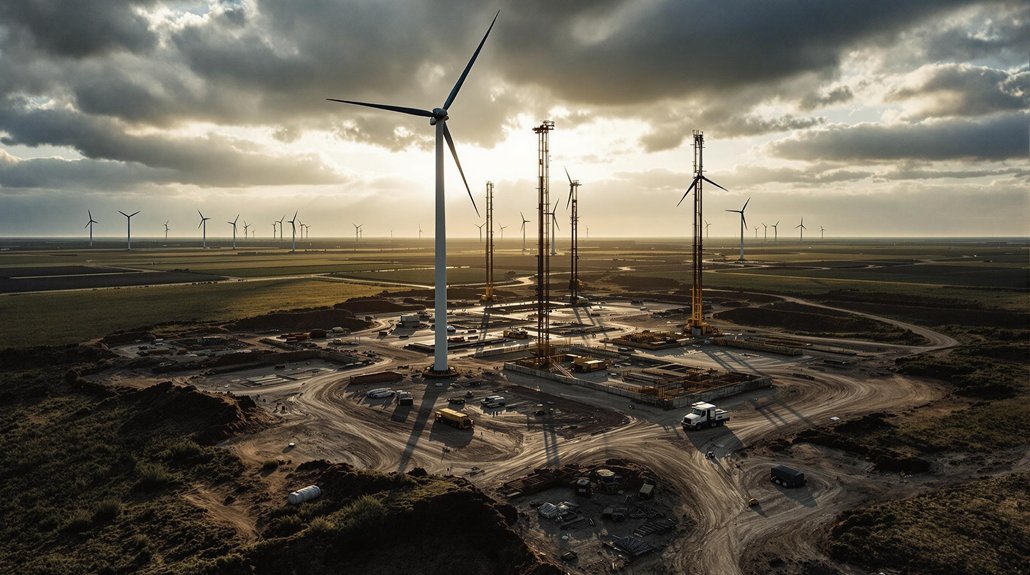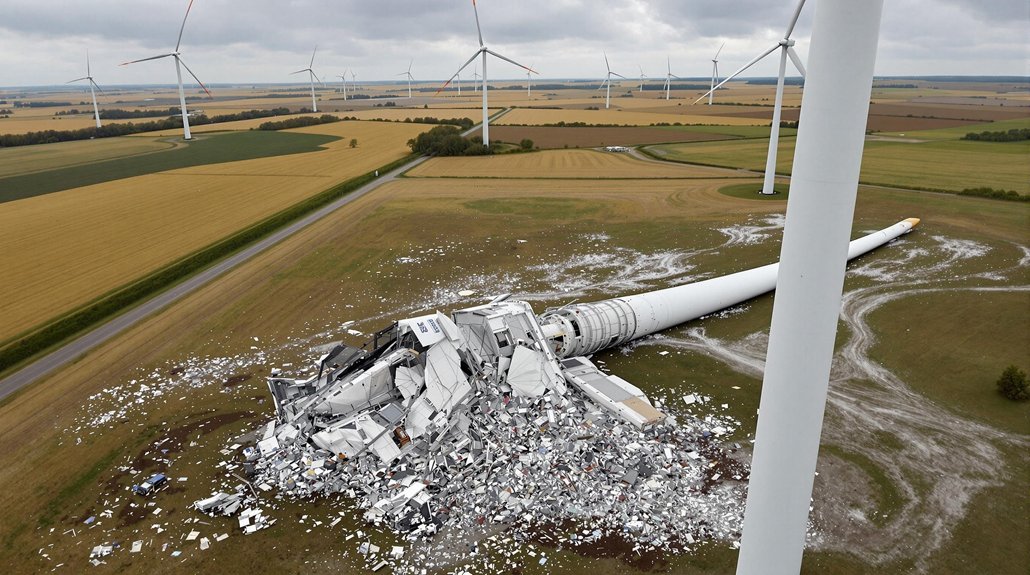While most data centers gobble up land and guzzle electricity, China’s newest tech marvel sits quietly underwater, powered by wind. Located off the coast of Shanghai’s Lin-gang Special Area, this ¥1.6 billion (US$226 million) project by HiCloud isn’t just another tech boondoggle. It’s a genuine game-changer.
The numbers tell the story. Over 95% of its electricity comes from offshore wind. Total power consumption? Down by 22.8% compared to traditional data centers. Its PUE ratio sits below 1.15, beating China’s national green data center targets for 2025. Not too shabby.
Green tech that delivers: 95% wind-powered, energy use slashed by nearly a quarter, and performance that shatters national targets.
Traditional data centers are resource hogs. They need massive air conditioning, tons of land, and gulp down fresh water like it’s going out of style. This underwater facility? It uses the ocean as natural cooling. No fresh water needed. Land requirements slashed by over 90%. Cooling energy below 10%. Mother Nature is basically doing the heavy lifting here.
The demonstration site currently offers 2.3MW of space, with interconnected server pods housing hundreds of servers each. But they’re dreaming bigger – a 500MW subsea deployment is in the works. Connected to the mainland via undersea cables, it’s ready to handle serious computing power. This aligns with the global shift toward renewable electricity generation which currently powers 29.1% of the world’s electricity needs.
This isn’t just some random tech experiment. It’s part of China’s ‘Eastern Data, Western Computing’ strategy, with strong government backing. The facility sits 114ft below surface in coastal waters with submarine server racks designed for durability. The facility is designed to support advanced AI workloads and high-performance computing applications essential for the digital economy. The global implications are huge. Who wouldn’t want to slash energy costs by nearly 23% while reducing their environmental footprint?
Sure, challenges remain. Scaling up underwater tech isn’t exactly a walk in the park. But the concept works. It’s profitable. It’s green.
Next time you’re scrolling through social media, remember: your data might be chilling at the bottom of the sea, cooled by ocean currents and powered by wind turbines. Tech doesn’t have to destroy the planet. Sometimes, it can actually work with it.
References
- https://newatlas.com/energy/wind-powered-underwater-data-center/
- https://futurism.com/science-energy/china-data-center-ocean-wind
- https://interestingengineering.com/energy/world-first-underwater-data-center-china
- https://solarvision.org/china-launches-worlds-first-wind-powered-underwater-data-center/
- https://www.datacenterdynamics.com/en/news/chinas-hicloud-launches-wind-powered-underwater-data-center-targets-500mw-subsea-deployment/
- https://developingtelecoms.com/telecom-technology/data-centres-networks/19239-chinese-company-claims-first-wind-powered-underwater-data-centre.html








